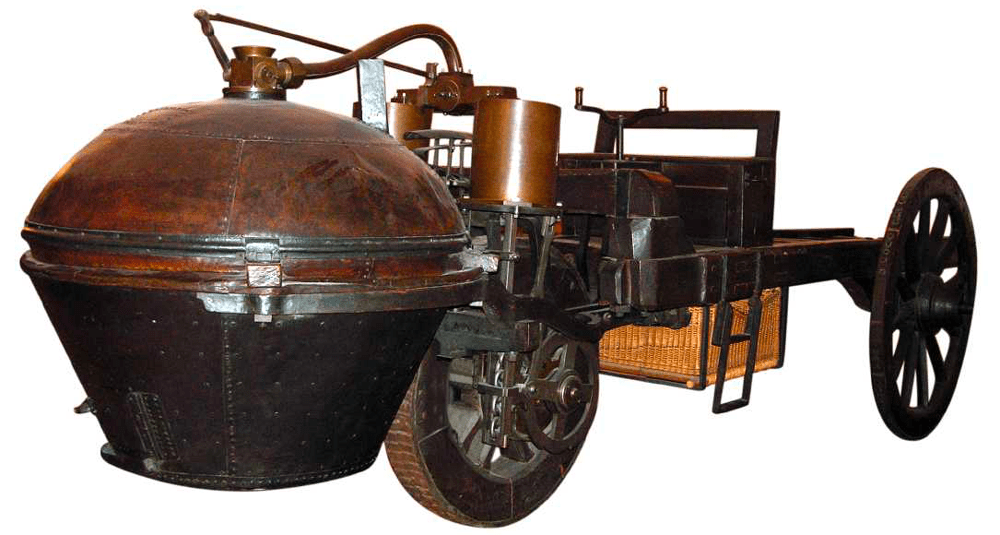Which French military engineer built the first motor vehicle ?
Last Updated:
Joseph Cugnot, born in 1725 in Void (Lorraine) and died in 1804 in Paris, was a French military engineer who remains famous for having designed the first motorized vehicle in history. In 1769, in a Paris workshop, he developed a revolutionary machine for its time, a steam-powered vehicle known as a fardier à vapeur. This invention marked a turning point in the history of the automobile.
In the 18th century, Europe was at the height of its scientific and industrial development. Military engineering, in particular, was seeking to improve logistics. Against this backdrop, the French Ministry of War commissioned Joseph Cugnot to design a machine capable of transporting heavy equipment, notably cannons, without recourse to animal traction.
Drawing on his mechanical experience and inspired by the work of his contemporaries on steam power, Cugnot designed a self-propelled vehicle, a totally new idea at the time.
Cugnot’s steam-powered fardier was built in 1769. It was a three-wheeled wooden carriage, with the front wheel providing steering and receiving power from a steam engine at the front of the vehicle. This engine, consisting of a boiler and two pistons, propels the fardier at a speed of 3 to 4 km/h.
This first test was followed by a second, improved prototype in 1770. Despite still-limited performance, autonomy was reduced to around fifteen minutes before the steam had to be reheated, the machine worked. A demonstration was given to the Paris authorities, but the experiment was inconclusive, mainly due to the machine’s weight, slowness and stability problems. A famous anecdote has it that Cugnot even hit a wall during one of his trials.
Despite its innovative nature, Cugnot’s fardier was never mass-produced. There are several reasons for this. Firstly, steam technology was in its infancy and unreliable for regular use. Secondly, economic and political conditions, France was on the eve of major upheavals, including the French Revolution, limited investment in this type of research.
Finally, the question of fuel, energy efficiency and appropriate infrastructure remains unanswered. The idea of an autonomous vehicle was perhaps too far ahead of its time.
It was only in the 19th century, with the development of the steam engine and then the internal combustion engine, that Joseph Cugnot’s legacy was rediscovered and celebrated. Today, he is considered one of the undisputed pioneers of the automobile. His 1770 fardier is preserved at the Musée des Arts et Métiers in Paris, where it can still be seen today as a masterpiece of technological history.
His name remains associated with an era when mechanical innovation paved the way for profound upheavals in transportation, warfare, commerce and society.
Joseph Cugnot invented the first automobile with his steam-powered fardier, built in 1769. Two centuries ahead of his time, this French military engineer anticipated the idea of an autonomous vehicle, propelled without the aid of animals. Although his invention did not see immediate development, it is a cornerstone in the history of the automobile and places Cugnot among the visionary precursors of modern mobility.
You may also be interested in
sciences

Which French military engineer built the first motor vehicle ?
Answer
In 1769, French military engineer Joseph Cugnot built the first motorized steam vehicle, the fardier à vapeur, the forerunner of the automobile.